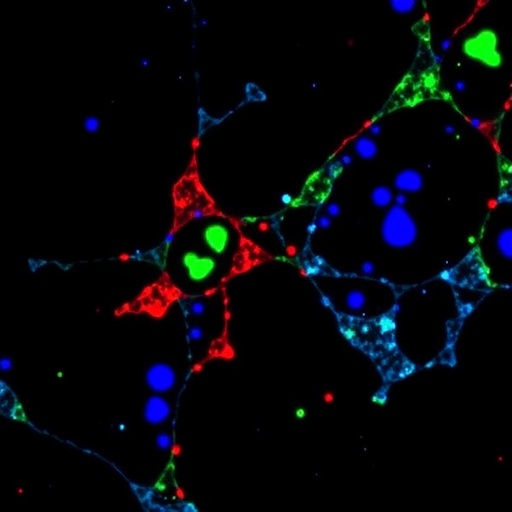
Credit: American Chemical Society
Imagine a raincoat that heals a scratch by shedding the part of the outer layer that's damaged. To create such a material, scientists have turned to nature for inspiration. They report in ACS' journal Langmuir a water-repellant material that molts like a snake's skin when damaged to reveal another hydrophobic layer beneath it.
Lotus leaves, water striders and other superhydrophobic examples from nature have inspired scientists to copy their water-repelling architecture to develop new materials. Such materials are often made by coating a substrate with nanostructures, which can be shored up by adding microstructures to the mix. Superhydrophobic surfaces could be useful in a range of applications including rain gear, medical instruments and self-cleaning car windows. But most of the prototypes so far haven't been strong enough to stand up to damage by sharp objects. To address this shortcoming, Jürgen Rühe and colleagues again found a potential solution in nature — in snake and lizard skins.
The researchers stacked three layers to create their material: a water-repellant film made with poly-1H,1H,2H,2H-perfluorodecyl acrylate (PFA) "nanograss" on the top, a water-soluble polymer in the middle and a superhydrophobic silicon nanograss film on the bottom. Nanograss consists of tiny needle-like projections sticking straight up. The team scratched the coating and submerged the material in water, which then seeped into the cut and dissolved the polymer. The top layer then peeled off like molted skin and floated away, exposing the bottom, water-repellant film. Although further work is needed to strengthen the top coating so that a scratch won't be able to penetrate all three layers, the researchers say it offers a new approach to creating self-cleaning and water-repellant materials.
###
The authors acknowledge support from the German Federal Ministry of Education and Research (BMBF) and VDI/VDE/IT GmbH through project NanoTau.
See how the material works in this Headline Science video.
The abstract that accompanies this study is available here.
The American Chemical Society is a nonprofit organization chartered by the U.S. Congress. ACS is the world's largest scientific society and a global leader in providing access to chemistry-related research through its multiple databases, peer-reviewed journals and scientific conferences. ACS does not conduct research, but publishes and publicizes peer-reviewed scientific studies. Its main offices are in Washington, D.C., and Columbus, Ohio.
To automatically receive news releases from the American Chemical Society, contact [email protected].
Follow us on Twitter | Facebook
Media Contact
Katie Cottingham
[email protected]
301-775-8455
@ACSpressroom
http://www.acs.org
############
Story Source: Materials provided by Scienmag




